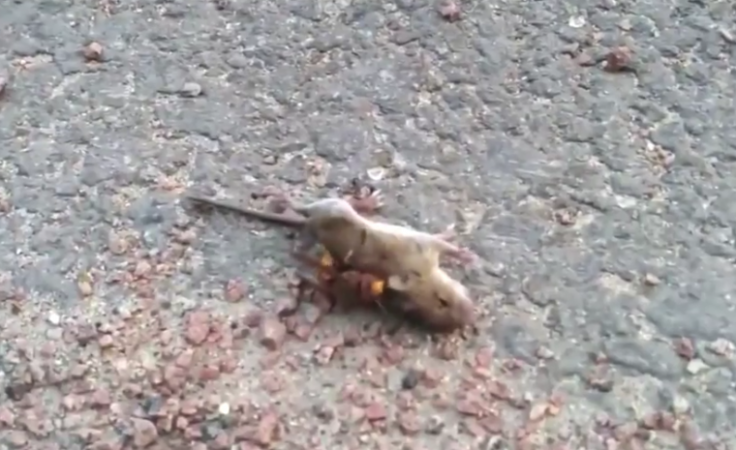Asian giant hornets, which have earned the nickname "murder hornets" thanks to their humongous size and venomous sting, have arrived in the United States. Now, a terrifying video has emerged of the large insects killing a mouse at least twice its size within a matter of seconds.
Murder hornet kills mouse in horrifying video

The murder hornet's lethality is demonstrated in the video which has emerged in the wake of reports of several sightings in North America. Cellphone footage of the incident, obtained by Daily Mail, shows a mouse desperately trying to escape from the 2-inch hornet latched on to its side before it kills the rodent with its venom in under a minute.
The two can be seen involved in a frantic battle before the hornet crawls onto the back of the mouse and repeatedly stabs it with its stinger. At one point, the poor mouse tries to pull away in a last feeble attempt to escape from the deadly insect but finally concedes before succumbing to its injuries. The hornet then flies away and starts attacking the cameraman before the video cuts out. Watch the entire video below:
Murder hornet invasion in the US
As their original name suggest, these hornets are native to the East Asia but hundreds of murder hornets have recently been spotted in the US as they emerge from winter hibernation.
There has been a large number of reported sightings in Washington state over the last few months (only two have been confirmed) and although they mostly feed on bees and other large insects, they can attack humans if they feel threatened. Their flesh-melting, venomous stings are capable of killing a full-grown man or woman if stung multiple times and are responsible for as many as 50 fatalities every year.
Here is a map of reported sightings of the murder hornet in Washington.
— Mike Baker (@ByMikeBaker) May 4, 2020
Note that the two red dots in the far north are the only CONFIRMED cases.
If you think you've seen one in the state, you can send report and picture here:https://t.co/6Nandcyv6Xhttps://t.co/miU3QLGCF9 pic.twitter.com/VFrkVBWQKZ
"An Asian giant hornet can sting you multiple times and deliver larger doses of venom just because of the size of them. The venom itself is fairly toxic and creates localized necrosis around the wound so you'll see melting flesh around the wound," Sven-Erik Spichiger, managing entomologist at the Washington state Agriculture Department told Reuters.
"If you sustain multiple stings, the necrosis and the venom will actually start getting into your bloodstream and will start working on your organs. And multiple stings could literally be fatal," he added.
It remains to be known how the hornets made their way to the US but scientists believe that they may have arrived on a container ship docking at one of Washington's ports.









